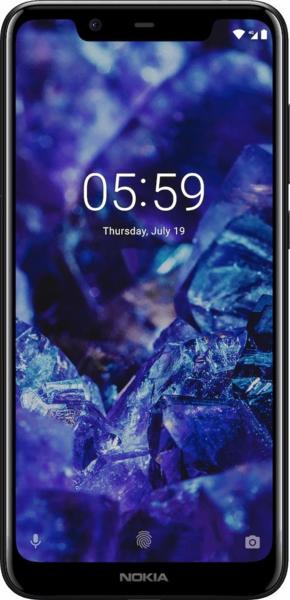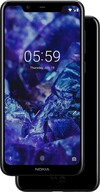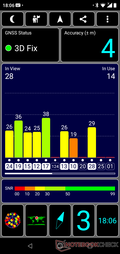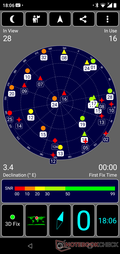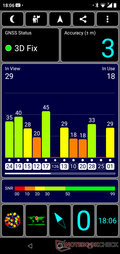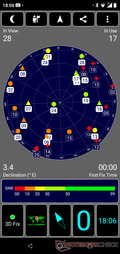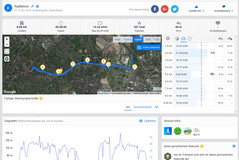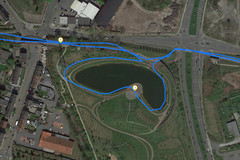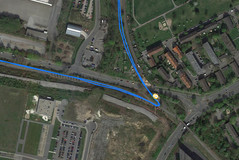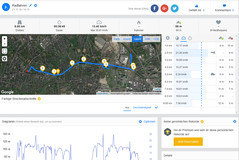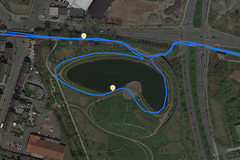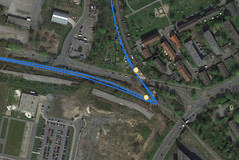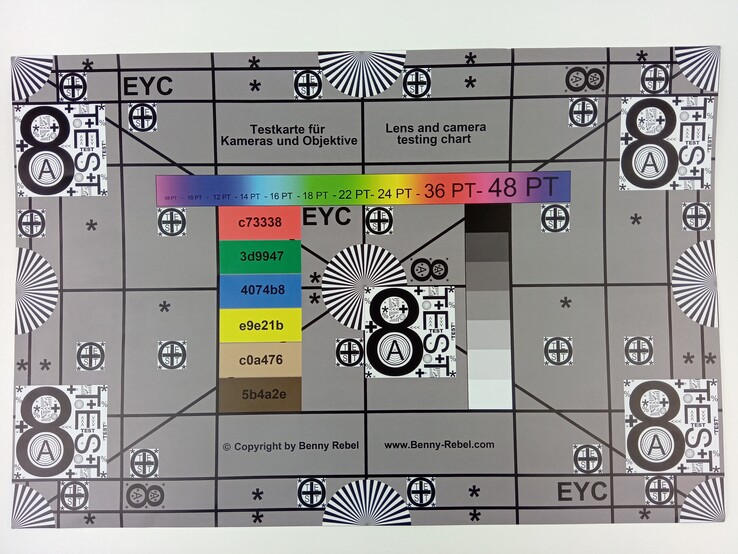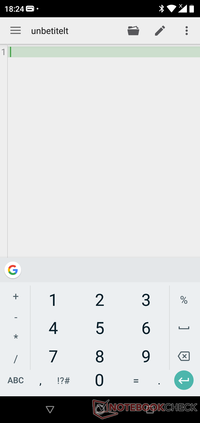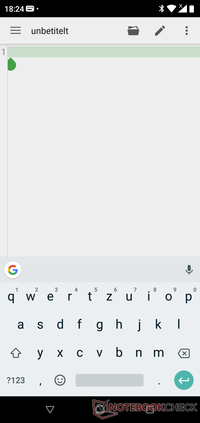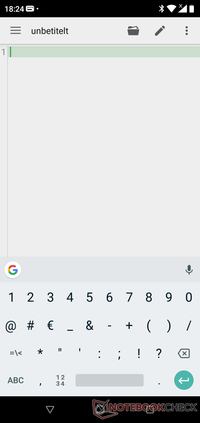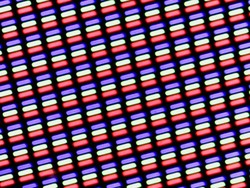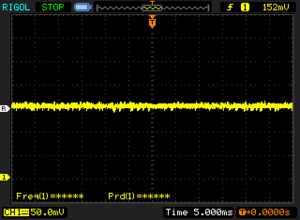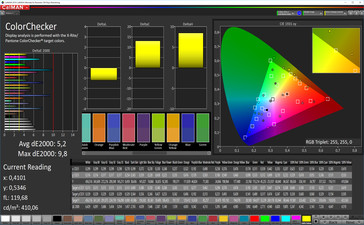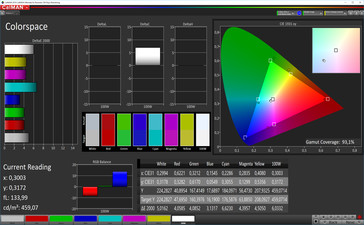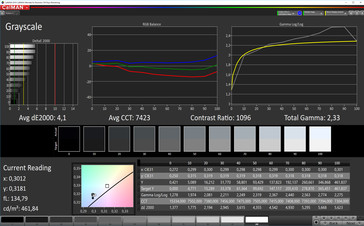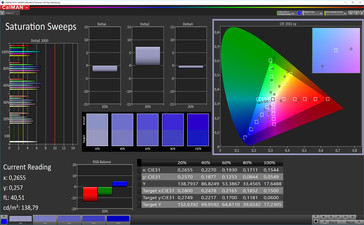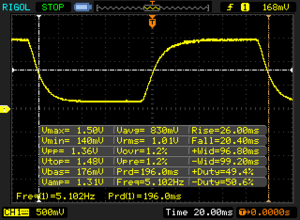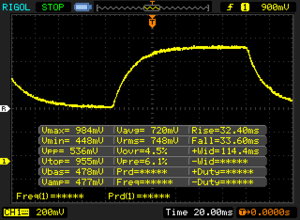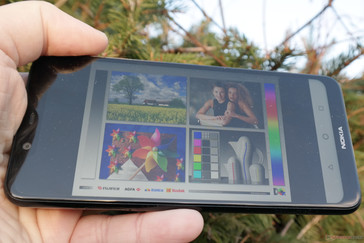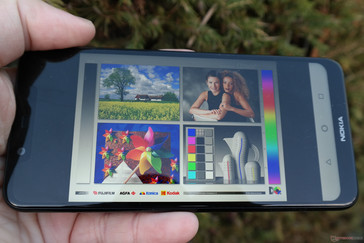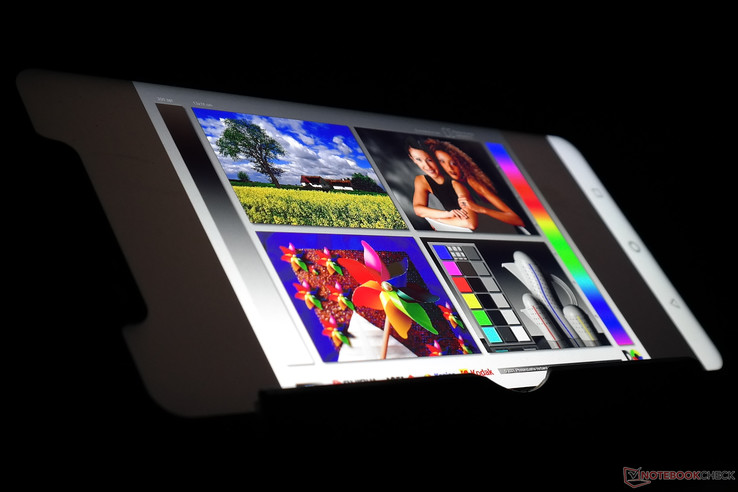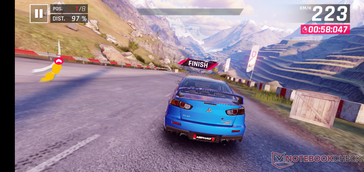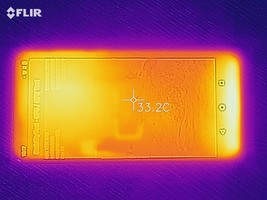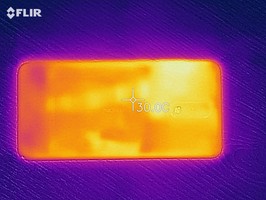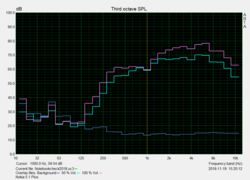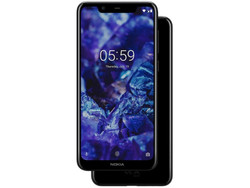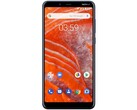Nokia 5.1 Plus (Nokia 5X) Smartphone Review

The Nokia 5.1 Plus has a 5.8-inch IPS display with a rather unusual 19:9 aspect ratio. The display is powered by 3 GB RAM and a MediaTek MT6771 SoC, the latter of which integrates an ARM Mali-G72 MP3 GPU. The SoC is also known as the MediaTek Helio P60. Nokia has equipped the 5.1 Plus with a meagre 3,060 mAh battery too, although this is on par with the battery capacities of many comparable smartphones. There is also 32 GB of internal storage, which can be expanded with a microSD card should you need more space. Moreover, the 5.1 Plus has a 5 MP front-facing camera and dual rear-facing sensors. All these components should combine to provide the 5.1 Plus with a small performance boost over its sibling, the Nokia 6.1.
We have seen the Helio P60 before in the Umidigi Z2 Pro, which we covered a few months ago. It will be interesting to see how well the 5.1 Plus fares against the Z2 Pro, particularly as the latter has 3 GB more RAM. Moreover, the 5.1 Plus runs stock Android 8.1 Oreo and is not bogged down by bloatware. Hence, the device should have snappier system performance compared to devices that run more resource-intensive customised versions of Android.
We have chosen to compare the 5.1 Plus against the Nokia 6.1 (Nokia 6 2018), which has a higher resolution display. Additionally, we shall be comparing our test device against the BQ Aquaris X2, the Honor 8X, the Motorola Moto G6, the Samsung Galaxy A6 Plus and the Umidigi Z2 Pro.
We will not include the Nokia 5.1 among our comparison devices though, despite its name suggesting that it may share plenty of attributes with the 5.1 Plus. The latter is considerably more powerful than the former, although the Nokia 5.1 has a higher-resolution display than its namesake. In short, we would not consider comparing the two devices against each other but for their similar names.
Case
The 5.1 Plus looks and feels more expensive than it is. HMD Global has designed the device with a metal frame and a glass back in the style of current flagship devices. Conversely, the Nokia 6.1 has an aluminium back that is tougher than glass and is less of a fingerprint magnet too. The 5.1 Plus also has a notched display that reminds us of the design of the Nokia 7.1, which we reviewed a few months ago. By contrast, the trend towards higher screen-to-body ratios appeared to pass the Nokia 5.1 and the Nokia 6 (2018) by. Moreover, the rear-facing camera housing protrudes slightly from the back of the device, which means that our test device cannot lie flat on a table.
Our test device is well-made considering its price. Gaps between materials are even and narrow, while the card slot also sits flush with the frame. Additionally, the hardware buttons have clear pressure points and feel sturdy when pressed. Moreover, our attempts to twist the 5.1 Plus were in vain as it would not even emit a sound regardless of how hard we tried to bend it.
The 5.1 Plus is sealed shut, which means that the battery is not user-replaceable. The device is also dual-SIM, although it only has a hybrid card slot, so you can either use two nano-SIMs or a single SIM and a microSD card.
The front of the device is covered with Gorilla Glass for added impact and scratch-protection. The 5.1 Plus has a smaller footprint than all our comparison devices, although the Nokia 6 (2018) is marginally shorter than our test device. Additionally, the combination of metal and glass helps the 5.1 Plus weigh only 162 g, which makes it lighter than all our comparison devices.
Connectivity
HMD Global has equipped the 5.1 Plus with a USB Type-C port, which is not always a given with devices in this price range. Please keep in mind that the Type-C operates at USB 2.0, rather than the faster USB 3.0 or 3.1 standards.
The device also supports up to 256-GB microSD cards, according to HMD Global, which corresponds with the SDXC standard. Theoretically, larger microSD cards should work too, but the device does not support exFAT, which limits file sizes to 4 GB. Furthermore, our test device cannot format microSD cards as internal storage, so apps can only be installed on the 32 GB of internal storage.
The 5.1 Plus also supports modern Wi-Fi standards up to 802.11 ac and Bluetooth 4.2.
HMD Global has equipped the device with 3 GB of RAM and 32 GB of internal storage, which puts the 5.1 Plus on par with its competitors. The distribution of ports is unsurprising too. The headphone jack is on the top of the device with the USB port on the underside, while the volume rocker sits above the power button on the right-hand side of the frame. HMD Global has placed the fingerprint sensor on the back of the device. The 5.1 Plus also integrates an FM receiver.
The device scores points for what is under the hood too. The 5.1 Plus is powered by a MediaTek Helio P60 SoC, which integrates an ARM Mali-G72 MP3-GPU. The comparatively low-resolution display, which operates at a native 1520x720 resolution, will also help improve CPU, GPU and system performance as the SoC has to render fewer pixels than it would if there was a 1080p display.
Software
The 5.1 Plus ships with Android One 8.1 Oreo, while our test device arrived with relatively recent Android security patches installed. XDA reported in late December 2018 that the 5.1 Plus had started receiving Android 9.0 Pie, but our test device had not received the update at the time of writing.
The Android One OS is a pure version of Android that Google supplies directly with security and system updates. HMD Global can only control the timing of when updates are released and cannot include any bloatware. Google promises to update devices running Android One for two years from launch.
The lack of third-party software is pleasing and ensures that the system can run in a lean manner.
Communication & GPS
Our test device performed well in our Wi-Fi tests, averaging over 300 Mb/s in both iperf3 Client Wi-Fi tests. Overall, the 5.1 Plus finished on par with the Z2 Pro and the Nokia 6.1, while our other comparison devices finished well short of our test device.
The 5.1 Plus has decent mobile connectivity too and utilises LTE Cat. 4 for up to 150 Mb/s download and 50 Mb/s upload speeds. The device can also connect to almost any network, but 4G connectivity will depend on the region in which you are using the device. Our test device maintained good mobile reception throughout testing.
The 5.1 Plus uses BeiDou, GLONASS, GPS and SBASS for location services. Our test device struggles to locate us indoors even when we stand next to a window, but this is expected performance from a budget smartphone. Predictably, GPS accuracy improves outside with our test device achieving a satellite fix with up to three metres accuracy, which is impressive.
We also subjected our test device to a bike ride to compare its location accuracy against the Garmin Edge 500, a professional navigation device. The 5.1 Plus plotted an 80-metre shorter route than the Garmin over an 8.66-km bike ride, which represents a 99% location accuracy. The 5.1 Plus cannot keep up with the Garmin in certain scenarios as demonstrated in the screenshots below. In short, the 5.1 Plus is an excellent navigation system that is easily good enough for general navigation tasks.
Telephone Features & Call Quality
The 5.1 Plus uses the standard suite of Google telephony apps to handle calls, contacts and texts. The apps function just like they do on other devices that we have tested.
Our test device has decent call quality. Both sides of the call are intelligible, and the speakerphone gets loud enough for making calls from noisy environments. Moreover, the microphone amplifies our voice well and does a good job at suppressing background noise. The included headphones are disappointing though, so we would recommend using other headphones where possible.
Cameras
The 5.1 Plus has dual rear-facing cameras, with the main 13 MP sensor being supported by a 5 MP depth sensor. The Zeiss branding with which HMD Global adorned the Nokia 8 is missing, but the 5.1 Plus has the same camera app, which looks like the Windows Phone Nokia Lumia camera app. The camera app has numerous settings including a manual mode should you wish to try to take a better photo than the automatic mode can.
Historically, Nokia pioneered innovations in smartphone camera tech, so our expectations remain, perhaps naively, exceptionally high. Our test device takes decent-looking photos though, which are detailed and they look clean. The main camera even does a good job at reproducing small objects and fine lines, which is not always the case for budget smartphones. However, our comparison devices generally do a better job at exposing shots than our test device, as demonstrated below in scene 3. Photos taken in low light are particularly poorly exposed, dominated by image noise and they are visibly blurry.
Overall, the 5.1 Plus has rear-facing cameras that are on par with our comparison devices. Likewise, videos look detailed and sharp, although our test device cannot shoot in 4K like the Nokia 6 (2018) can. Time-lapse and slow-motion videos are available though, albeit the 5.1 Plus can only record the latter in a strikingly low resolution.
The front-facing camera is an 8 MP sensor that takes passable photos, which lack sharpness to our eyes. The camera can only record videos in up to 720p too.
We also took a closer look at the main camera under controlled lighting conditions. ColorChecker Passport demonstrates that our test device reproduces colours vibrantly, although white and black tones are too bright compared to the reference colour. Grey tones look warmer than they should too.
By contrast, the 5.1 Plus did a great job at capturing our test chart. The chart is uniformly sharp across the entire image, and there is no visible fraying of fine lines or text. There is some image noise at the edges of the chart, and the contrast drops off too, but these are minor quibbles.
Accessories & Warranty
The 5.1 Plus comes with a USB Type-A to Type-C cable and a charger. There is also some warranty information and a quick-start guide in several languages. There are some headphones too, but the less said about these, the better. They fit poorly in our ears and have underwhelming sound. HMD Global does not currently sell any 5.1 Plus specific accessories, but third-party companies sell cases and screen protectors should you need them.
The 5.1 Plus comes with 24 months manufacturer’s warranty. Please see our Guarantees, Return policies and Warranties article for country-specific information.
Input Devices & Operation
The Nokia 5.1 Plus has a 10-point multi-touch display, which worked reliably during testing. The display has a smooth finish that proved easy to use during our tests too. Moreover, we noticed no delays while playing Gismart's Piano Free app between our fingers touching the screen and the input being replicated on-screen.
The 5.1 Plus has Google GBoard preinstalled as its default keyboard, which functions just as well as it does on other devices that we have reviewed. You could download another keyboard from the Google Play Store if you prefer though.
The fingerprint sensor is on the back of the device and worked quickly throughout testing. Unfortunately, the fingerprint sensor could not unlock our test device from standby, which is something that we have come to expect from other smartphones.
However, HMD Global has integrated lift-to-wake and tap-to-wake features to simplify using the device. Unfortunately, we still had to swipe again after unlocking our test device with our fingerprint regardless of how we woke it from standby.
Display
The 5.1 Plus has a 5.8-inch display that operates natively at 1520x720. The resolution results in a somewhat odd 19:9 aspect ratio and a pixel density of around 290 PPI. Our test device achieved an average maximum brightness of 502 cd/m² according to X-Rite i1Pro 2, which is better than all our comparison devices except for the BQ Aquaris X2. The 5.1 Plus also has a decent 0.36 cd/m² black value and an impressively high 1425:1 contrast ratio. Only the Z2 Pro of our comparison devices achieved better results in this regard, but the 5.1 Plus blows away devices like the Honor 8X and the Nokia 6 (2018). The Samsung Galaxy A6 Plus has an AMOLED display though, which means that it theoretically has an infinite contrast ratio and can deliver absolute black tones. Moreover, our test device has an 89% evenly lit display, which is respectable but is slightly less homogenous than the Aquaris X2.
We should mention the resolution though as all our comparison devices have Full HD displays. The display in the 5.1 Plus has 1,094,400 pixels, which is less than half of the 2,527,200 that the Honor 8X has. However, in daily use, most people will only notice the difference in resolution if they look closely at the 5.1 Plus next to any of our comparison devices. There are positives to having a lower resolution display, which we will cover in the Performance section of the review.
| |||||||||||||||||||||||||
Brightness Distribution: 89 %
Center on Battery: 513 cd/m²
Contrast: 1425:1 (Black: 0.36 cd/m²)
ΔE ColorChecker Calman: 5.2 | ∀{0.5-29.43 Ø4.78}
ΔE Greyscale Calman: 4.1 | ∀{0.09-98 Ø5}
93.1% sRGB (Calman 2D)
Gamma: 2.33
CCT: 7423 K
| Nokia 5.1 Plus IPS, 1520x720, 5.8" | Nokia 6 2018 IPS, 1920x1080, 5.5" | Umidigi Z2 Pro IPS, 2246x1080, 6.2" | Samsung Galaxy A6 Plus 2018 Super AMOLED, 2220x1080, 6" | Honor 8X LCD IPS, 2340x1080, 6.5" | Motorola Moto G6 IPS, 2160x1080, 5.7" | BQ Aquaris X2 IPS LCD, 2160x1080, 5.7" | |
|---|---|---|---|---|---|---|---|
| Screen | -33% | -33% | 33% | -29% | -1% | -9% | |
| Brightness middle (cd/m²) | 513 | 417 -19% | 479 -7% | 519 1% | 484 -6% | 488 -5% | 631 23% |
| Brightness (cd/m²) | 502 | 421 -16% | 466 -7% | 513 2% | 469 -7% | 478 -5% | 622 24% |
| Brightness Distribution (%) | 89 | 88 -1% | 73 -18% | 93 4% | 93 4% | 95 7% | 96 8% |
| Black Level * (cd/m²) | 0.36 | 0.61 -69% | 0.27 25% | 0.55 -53% | 0.42 -17% | 0.61 -69% | |
| Contrast (:1) | 1425 | 684 -52% | 1774 24% | 880 -38% | 1162 -18% | 1034 -27% | |
| Colorchecker dE 2000 * | 5.2 | 6.1 -17% | 8.2 -58% | 1.8 65% | 7.3 -40% | 3.9 25% | 5.5 -6% |
| Colorchecker dE 2000 max. * | 9.8 | 11.2 -14% | 16.2 -65% | 3.6 63% | 11.1 -13% | 6.8 31% | 8.5 13% |
| Greyscale dE 2000 * | 4.1 | 7.1 -73% | 10.5 -156% | 1.5 63% | 7.4 -80% | 5.3 -29% | 5.6 -37% |
| Gamma | 2.33 94% | 2.16 102% | 2.47 89% | 2.06 107% | 2.16 102% | 2.41 91% | 2.38 92% |
| CCT | 7423 88% | 8362 78% | 9193 71% | 6462 101% | 8534 76% | 7146 91% | 7531 86% |
* ... smaller is better
Screen Flickering / PWM (Pulse-Width Modulation)
| Screen flickering / PWM not detected | |||
In comparison: 53 % of all tested devices do not use PWM to dim the display. If PWM was detected, an average of 8101 (minimum: 5 - maximum: 343500) Hz was measured. | |||
We also subjected the 5.1 Plus to further tests with a photo spectrometer and CalMAN analysis software. The results demonstrate that our test device is comparatively colour accurate upon delivery. The 5.1 Plus achieved DeltaE ColorChecker deviations of 5.2, which puts the device in second place behind the Galaxy A6 Plus and is just above the ideal target of 3. Typically, you would have to spend a lot more to get a smartphone with a more colour-accurate display than the one in the 5.1 Plus. Our additional tests flag a slightly blue tint to grey tones, but we did not notice this with our eyes, so we doubt that this would be an issue for most people in daily use.
Display Response Times
| ↔ Response Time Black to White | ||
|---|---|---|
| 46.4 ms ... rise ↗ and fall ↘ combined | ↗ 26 ms rise | |
| ↘ 20.4 ms fall | ||
| The screen shows slow response rates in our tests and will be unsatisfactory for gamers. In comparison, all tested devices range from 0.1 (minimum) to 240 (maximum) ms. » 99 % of all devices are better. This means that the measured response time is worse than the average of all tested devices (20.2 ms). | ||
| ↔ Response Time 50% Grey to 80% Grey | ||
| 66 ms ... rise ↗ and fall ↘ combined | ↗ 32.4 ms rise | |
| ↘ 33.6 ms fall | ||
| The screen shows slow response rates in our tests and will be unsatisfactory for gamers. In comparison, all tested devices range from 0.165 (minimum) to 636 (maximum) ms. » 98 % of all devices are better. This means that the measured response time is worse than the average of all tested devices (31.6 ms). | ||
The 5.1 Plus is easy to use outdoors thanks to its bright display. The screen got bright enough to overcome most reflections that it encountered during our tests and even those in direct New Year’s sunlight. Correspondingly, our test device is readable in the shade too.
Performance
The 5.1 Plus is powered by a MediaTek Helio P60, which we have also seen in the Umidigi Z2 Pro. The octa-core SoC consists of four Cortex-A73 cores and four Cortex-A53 cores that each clock up to 1.81 GHz. The Helio P60 integrates an ARM Mali-G72 MP3 GPU and is complemented by 3 GB of RAM.
The Helio P60 is considerably more powerful than the Helio P10 found in the Nokia 5.1. Our test device finished on par with the best of our comparison devices in most benchmarks, although it consistently fell short of the Honor 8X with its HiSilicon Kirin 710 SoC.
The ARM Mali-G72 GPU also performed well in benchmarks partially because of the 5.1 Plus’ low-resolution display. However, our test device does not get the maximum from its GPU though as demonstrated by comparing GPU benchmark results against what the Umidigi Z2 Pro also achieved. The latter scored more in off-screen benchmarks despite having a higher-resolution display and even scored 25% higher in certain benchmarks. We suspect that the reason for this is that the Umidigi clocks up to 2 GHz while the 5.1 Plus is limited to 1.81 GHz, which is a 5% lower clock speed per core.
| Basemark GPU 1.1 | |
| 1920x1080 Vulkan Medium Offscreen (sort by value) | |
| Umidigi Z2 Pro | |
| Honor 8X | |
| Average Mediatek Helio P60 (n=1) | |
| Vulkan Medium Native (sort by value) | |
| Umidigi Z2 Pro | |
| Honor 8X | |
| BQ Aquaris X2 | |
| Average Mediatek Helio P60 (n=1) | |
| 1920x1080 OpenGL Medium Offscreen (sort by value) | |
| Nokia 5.1 Plus | |
| Umidigi Z2 Pro | |
| Honor 8X | |
| BQ Aquaris X2 | |
| Average Mediatek Helio P60 (7.98 - 11.7, n=2) | |
| AnTuTu v7 - Total Score (sort by value) | |
| Nokia 5.1 Plus | |
| Nokia 6 2018 | |
| Umidigi Z2 Pro | |
| Samsung Galaxy A6 Plus 2018 | |
| Honor 8X | |
| Motorola Moto G6 | |
| BQ Aquaris X2 | |
| Average Mediatek Helio P60 (119367 - 138589, n=5) | |
| AnTuTu v6 - Total Score (sort by value) | |
| Nokia 5.1 Plus | |
| Nokia 6 2018 | |
| Umidigi Z2 Pro | |
| Samsung Galaxy A6 Plus 2018 | |
| Honor 8X | |
| Motorola Moto G6 | |
| BQ Aquaris X2 | |
| Average Mediatek Helio P60 (91667 - 110668, n=4) | |
| VRMark - Amber Room (sort by value) | |
| Nokia 5.1 Plus | |
| Umidigi Z2 Pro | |
| Honor 8X | |
| BQ Aquaris X2 | |
| Average Mediatek Helio P60 (1029 - 1119, n=2) | |
| Basemark ES 3.1 / Metal - offscreen Overall Score (sort by value) | |
| Nokia 5.1 Plus | |
| Umidigi Z2 Pro | |
| Honor 8X | |
| Motorola Moto G6 | |
| BQ Aquaris X2 | |
| Average Mediatek Helio P60 (322 - 413, n=2) | |
| Average of class Smartphone (205 - 7731, n=35, last 2 years) | |
The hamstrung CPU speeds do not prevent the 5.1 Plus from scoring well in browser benchmarks, although it scores up to 10% lower than the average of Helio P60-powered devices that we have already tested. We conducted our browser tests using Chrome 71, for reference.
Subjectively speaking, browsing the Internet feels snappy on the 5.1 Plus. Even complex websites and media content load quickly, which is impressive for a device at this price point.
| JetStream 1.1 - Total Score | |
| Honor 8X (Chrome 70) | |
| Average Mediatek Helio P60 (41.7 - 48.9, n=6) | |
| Umidigi Z2 Pro (Chrome 69) | |
| BQ Aquaris X2 (Chrome 67) | |
| Nokia 5.1 Plus (Chrome 71) | |
| Nokia 6 2018 (Browser: Chrome 65) | |
| Motorola Moto G6 (Chrome 66) | |
| Samsung Galaxy A6 Plus 2018 (Chrome 67) | |
| Octane V2 - Total Score | |
| Average of class Smartphone (2228 - 121337, n=197, last 2 years) | |
| Honor 8X (Chrome 70) | |
| BQ Aquaris X2 (Chrome 67) | |
| Average Mediatek Helio P60 (8287 - 10257, n=7) | |
| Nokia 5.1 Plus (Chrome 71) | |
| Umidigi Z2 Pro (Chrome 69) | |
| Nokia 6 2018 (Browser: Chrome 65) | |
| Samsung Galaxy A6 Plus 2018 (Chrome 67) | |
| Motorola Moto G6 (Chrome 66) | |
| Mozilla Kraken 1.1 - Total | |
| Motorola Moto G6 (Chrome 66) | |
| Samsung Galaxy A6 Plus 2018 (Chrome 67) | |
| Nokia 6 2018 (Browser: Chrome 65) | |
| BQ Aquaris X2 | |
| Nokia 5.1 Plus (Chrome 71) | |
| Average Mediatek Helio P60 (4309 - 4773, n=6) | |
| Umidigi Z2 Pro (Chrome 69) | |
| Honor 8X | |
| Average of class Smartphone (257 - 28190, n=154, last 2 years) | |
| WebXPRT 3 - Overall | |
| Average of class Smartphone (38 - 380, n=31, last 2 years) | |
| Honor 8X (Chrome 70) | |
| BQ Aquaris X2 (Chrome 67) | |
| Umidigi Z2 Pro | |
| Average Mediatek Helio P60 (43 - 54, n=4) | |
| Nokia 5.1 Plus | |
| Nokia 6 2018 (Chrome 66) | |
| Samsung Galaxy A6 Plus 2018 | |
| Motorola Moto G6 (Chrome 66) | |
| WebXPRT 2015 - Overall | |
| Umidigi Z2 Pro (Chrome 69) | |
| BQ Aquaris X2 (Chrome 67) | |
| Average Mediatek Helio P60 (139 - 167, n=2) | |
| Honor 8X (Chrome 70) | |
| Nokia 5.1 Plus (Chrme 71) | |
| Nokia 6 2018 | |
| Samsung Galaxy A6 Plus 2018 (Chrome 67) | |
| Motorola Moto G6 (Chrome 66) | |
* ... smaller is better
The Nokia 5.1 Plus has 32 GB of eMMC flash memory, of which around 22 GB is available upon delivery. HMD Global has equipped the device with reasonably fast storage that delivered above-average performance in benchmarks. Our test device finished bottom overall in our comparison table, but the gap between bottom and top is small.
Our test device also performed well in AndroBench 3-5 when tested with the Toshiba Exceria Pro M501, our reference microSD card. The 5.1 Plus cannot reach the card’s maximum potential transfer speeds, but it is on par with our comparison devices and outscored the class average.
| Nokia 5.1 Plus | Nokia 6 2018 | Umidigi Z2 Pro | Samsung Galaxy A6 Plus 2018 | Honor 8X | Motorola Moto G6 | BQ Aquaris X2 | Average 32 GB eMMC Flash | Average of class Smartphone | |
|---|---|---|---|---|---|---|---|---|---|
| AndroBench 3-5 | -9% | 16% | -4% | 33% | 23% | 5% | -14% | 1031% | |
| Sequential Read 256KB (MB/s) | 301.6 | 272.6 -10% | 292.9 -3% | 298.8 -1% | 283.9 -6% | 238.2 -21% | 270.5 -10% | 242 ? -20% | 2228 ? 639% |
| Sequential Write 256KB (MB/s) | 88.9 | 118.3 33% | 188.1 112% | 88.5 0% | 170 91% | 117.2 32% | 188.7 112% | 100.5 ? 13% | 1852 ? 1983% |
| Random Read 4KB (MB/s) | 77.7 | 38.78 -50% | 86.2 11% | 72.9 -6% | 49.54 -36% | 69.9 -10% | 43.9 -44% | 43.1 ? -45% | 296 ? 281% |
| Random Write 4KB (MB/s) | 25.65 | 15.3 -40% | 20.34 -21% | 16.1 -37% | 59.9 134% | 59.9 134% | 14.4 -44% | 22.3 ? -13% | 339 ? 1222% |
| Sequential Read 256KB SDCard (MB/s) | 76.6 ? | 83.4 ? 9% | 76.1 ? -1% | 83.4 ? 9% | 75.2 ? -2% | 75.3 ? -2% | 82.9 ? 8% | 71.8 ? -6% | |
| Sequential Write 256KB SDCard (MB/s) | 59.6 ? | 61.3 ? 3% | 58.9 ? -1% | 67.8 ? 14% | 68.1 ? 14% | 61.5 ? 3% | 62.3 ? 5% | 52.9 ? -11% |
Games
The ARM Mali-G72 MP3 GPU handles almost all games smoothly and at high graphics. Many titles are playable at 60 FPS thanks to the 720p display, although more-complex games like Asphalt 9: Legends and PUBG Mobile average below 30 FPS, which is not an enjoyable gaming experience. By contrast, Shadow Fight 3 averaged nearly 50 FPS at high graphics. Interestingly, all three games that we ran on the 5.1 Plus averaged almost the same FPS regardless of the graphics preset at which we set them. Hence, some graphics settings must be set automatically, which renders the graphics presets somewhat redundant.
The positional sensor and touchscreen worked well throughout our games tests. Our test device reacted promptly and accurately when playing Asphalt 9: Legends, so you should have no issues when playing games in daily use.
Shadow Fight 3
Asphalt 9
PUBG Mobile
Emissions
Temperature
The 5.1 Plus manages its surface temperatures relatively well. Our test device averages a respectable 30.45 °C when idling, which rises to a maximum of 34.8 °C under sustained load. The 5.1 Plus is on par with the Nokia 6 (2018) in this regard, although the latter is significantly cooler at idle.
Moreover, our test device does not thermal throttle either. We subjected the 5.1 Plus to a looped GFXBench Battery Manhattan benchmark, during which frame rates dropped by around 1%. Such a small change does not constitute thermal throttling, so you should have no problems pushing your 5.1 Plus hard in daily use.
(+) The maximum temperature on the upper side is 34.8 °C / 95 F, compared to the average of 35.2 °C / 95 F, ranging from 21.9 to 247 °C for the class Smartphone.
(+) The bottom heats up to a maximum of 34.7 °C / 94 F, compared to the average of 34 °C / 93 F
(+) In idle usage, the average temperature for the upper side is 31.3 °C / 88 F, compared to the device average of 32.9 °C / 91 F.
Speakers
The 5.1 Plus has a single speaker on the underside of the device. The speaker is decent and provides a balanced frequency response at mid and high frequencies when the volume is set at medium. The speaker in our test device reaches a maximum of 85.6 dB(A), which is comparatively loud. Predictably, there is no bass, but even larger laptop speakers struggle to reproduce bass tones accurately. In short, the 5.1 Plus has a good speaker for its class.
The device also supports aptX for high-resolution Bluetooth audio. Moreover, the headphone jack also delivers clean-sounding audio.
Nokia 5.1 Plus audio analysis
(+) | speakers can play relatively loud (85.6 dB)
Bass 100 - 315 Hz
(-) | nearly no bass - on average 24.6% lower than median
(±) | linearity of bass is average (13.2% delta to prev. frequency)
Mids 400 - 2000 Hz
(+) | balanced mids - only 4.1% away from median
(+) | mids are linear (5.4% delta to prev. frequency)
Highs 2 - 16 kHz
(±) | higher highs - on average 12.4% higher than median
(+) | highs are linear (3.9% delta to prev. frequency)
Overall 100 - 16.000 Hz
(±) | linearity of overall sound is average (24.9% difference to median)
Compared to same class
» 60% of all tested devices in this class were better, 7% similar, 33% worse
» The best had a delta of 11%, average was 35%, worst was 134%
Compared to all devices tested
» 75% of all tested devices were better, 5% similar, 19% worse
» The best had a delta of 4%, average was 24%, worst was 134%
Nokia 6 2018 audio analysis
(+) | speakers can play relatively loud (87.2 dB)
Bass 100 - 315 Hz
(-) | nearly no bass - on average 29.6% lower than median
(±) | linearity of bass is average (7.2% delta to prev. frequency)
Mids 400 - 2000 Hz
(+) | balanced mids - only 4.4% away from median
(±) | linearity of mids is average (7% delta to prev. frequency)
Highs 2 - 16 kHz
(±) | higher highs - on average 6.9% higher than median
(+) | highs are linear (3.2% delta to prev. frequency)
Overall 100 - 16.000 Hz
(±) | linearity of overall sound is average (23.2% difference to median)
Compared to same class
» 52% of all tested devices in this class were better, 7% similar, 41% worse
» The best had a delta of 11%, average was 35%, worst was 134%
Compared to all devices tested
» 69% of all tested devices were better, 5% similar, 26% worse
» The best had a delta of 4%, average was 24%, worst was 134%
Battery Life
Power Consumption
The power consumption of the 5.1 Plus is on par with our comparison devices. Our test device consumes a minimum of 0.56 W at idle, which puts it first in our comparison table. However, power consumption rose to a maximum of 5.2 W under load during our tests and averaged 3.11 W when pushed hard, both of which are on the high side compared to its competitors. Overall, the 5.1 Plus consumes slightly more than the average of Helio P60-powered devices that we have currently tested, but this does not make it a particularly power-hungry device.
The 5.1 Plus should be QuickCharge capable. Our test device recharged fully in under two hours with the included charger.
| Off / Standby | |
| Idle | |
| Load |
|
Key:
min: | |
| Nokia 5.1 Plus 3060 mAh | Nokia 6 2018 3000 mAh | Umidigi Z2 Pro 3550 mAh | Samsung Galaxy A6 Plus 2018 3500 mAh | Honor 8X 3750 mAh | Motorola Moto G6 3000 mAh | BQ Aquaris X2 3100 mAh | Average Mediatek Helio P60 | Average of class Smartphone | |
|---|---|---|---|---|---|---|---|---|---|
| Power Consumption | -0% | -23% | 32% | -38% | 3% | -26% | -37% | -54% | |
| Idle Minimum * (Watt) | 0.56 | 0.67 -20% | 0.71 -27% | 0.62 -11% | 0.92 -64% | 0.6 -7% | 0.65 -16% | 0.97 ? -73% | 0.842 ? -50% |
| Idle Average * (Watt) | 1.72 | 1.76 -2% | 2.01 -17% | 0.96 44% | 2.3 -34% | 1.81 -5% | 2.24 -30% | 2.36 ? -37% | 1.439 ? 16% |
| Idle Maximum * (Watt) | 1.76 | 1.78 -1% | 2.03 -15% | 0.99 44% | 2.32 -32% | 1.86 -6% | 2.26 -28% | 2.41 ? -37% | 1.624 ? 8% |
| Load Average * (Watt) | 3.11 | 2.82 9% | 3.61 -16% | 1.85 41% | 4.37 -41% | 2.78 11% | 3.87 -24% | 3.53 ? -14% | 7.03 ? -126% |
| Load Maximum * (Watt) | 5.2 | 4.56 12% | 7.34 -41% | 3.04 42% | 6.13 -18% | 4.04 22% | 6.8 -31% | 6.45 ? -24% | 11.3 ? -117% |
* ... smaller is better
Battery Life
The 5.1 Plus has a 3,060 mAh battery, which performed well in our battery life tests. Our test device achieved excellent runtimes at idle, which underlines our power consumption results. Moreover, it lasted a respectable 12:59 hours in our Wi-Fi battery life test, which puts it fourth in our comparison table. However, our test device performed particularly poorly in our battery life under load test, which ends with the 5.1 Plus second bottom of our comparison table overall.
| Nokia 5.1 Plus 3060 mAh | Nokia 6 2018 3000 mAh | Umidigi Z2 Pro 3550 mAh | Samsung Galaxy A6 Plus 2018 3500 mAh | Honor 8X 3750 mAh | Motorola Moto G6 3000 mAh | BQ Aquaris X2 3100 mAh | |
|---|---|---|---|---|---|---|---|
| Battery runtime | 32% | -0% | 24% | 9% | 0% | -21% | |
| Reader / Idle (h) | 32.6 | 30.6 -6% | 21.2 -35% | 30.3 -7% | 19.5 -40% | ||
| WiFi v1.3 (h) | 13 | 15.7 21% | 11.2 -14% | 14.1 8% | 14.2 9% | 9.2 -29% | 10.3 -21% |
| Load (h) | 3.3 | 6 82% | 4.9 48% | 5.6 70% | 5.6 70% | ||
| H.264 (h) | 11.3 | 15.3 | 10 |
Pros
Cons
Verdict
The Nokia 5.1 Plus is a balanced smartphone. There is nothing particularly wrong with the device, although it does not get the most out of its SoC. Most people would not notice this without having a device like the Umidigi Z2 Pro against which to compare the 5.1 Plus though, so this should not prove an issue in daily use. Moreover, the 5.1 Plus does not do anything that necessarily sets itself out from the Nokia 6.1, although the more modern design of the 5.1 Plus may appeal more to some people. This is a matter of taste though.
The Nokia 5.1 Plus is a well-balanced and affordable smartphone that hardly puts a foot wrong.
There are plenty of positives to talk about too. The 5.1 Plus is elegantly and robustly designed with a powerful SoC, plenty of RAM, a decent camera and a pure Android experience.
Overall, the positives outweigh the negatives with the Nokia 5.1 Plus, and it is a device to which we give a clear recommendation to buy. There are small gripes like the inability to format a microSD card as internal storage and that the SoC is not fully utilised, but these do not detract from the Nokia 5.1 Plus being an excellent budget smartphone.
Nokia 5.1 Plus
- 01/04/2019 v6 (old)
Florian Schaar




